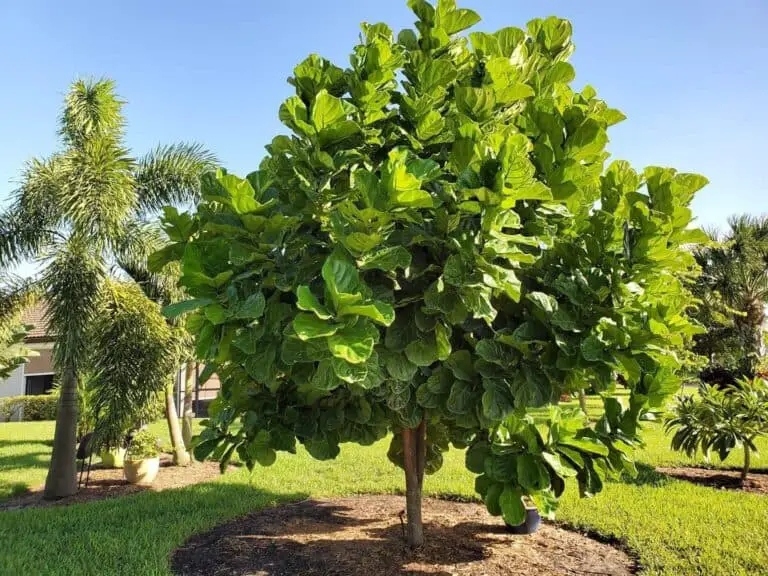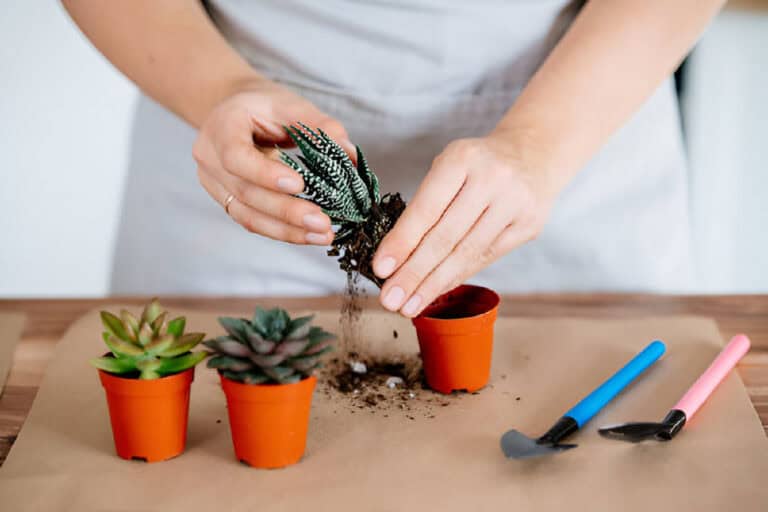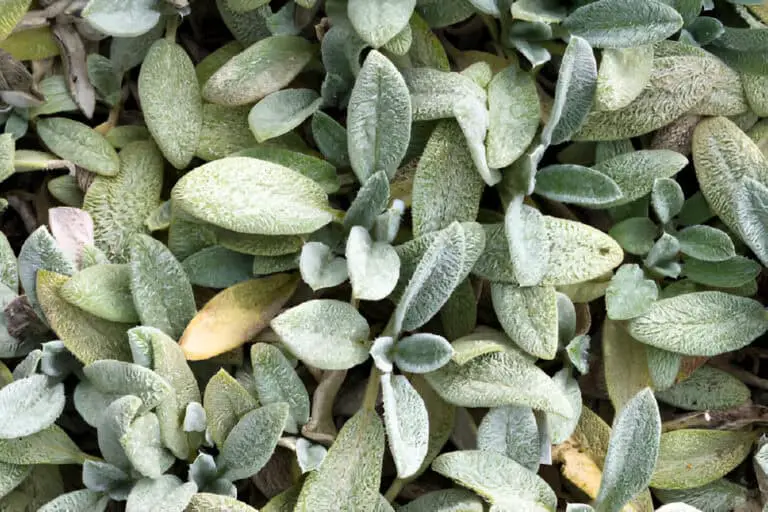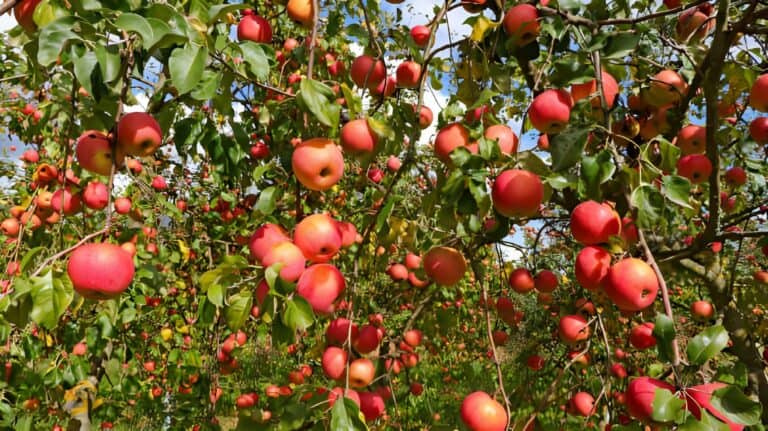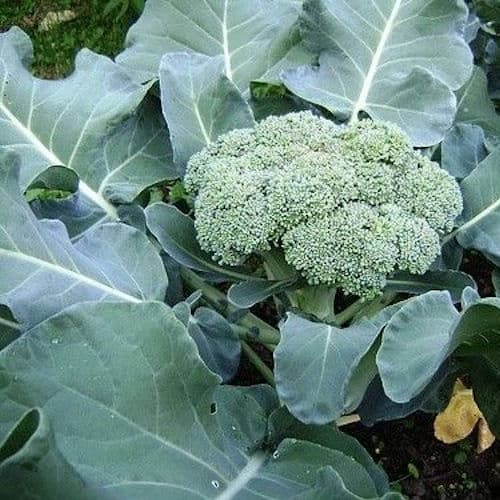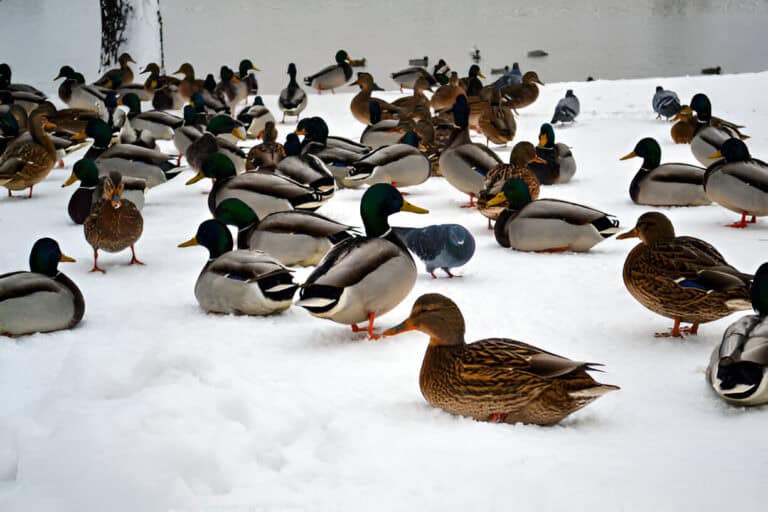Weeping Siberian Peashrub (Caragana Arborescens ‘Pendula’): Plant Care and Growing Guide
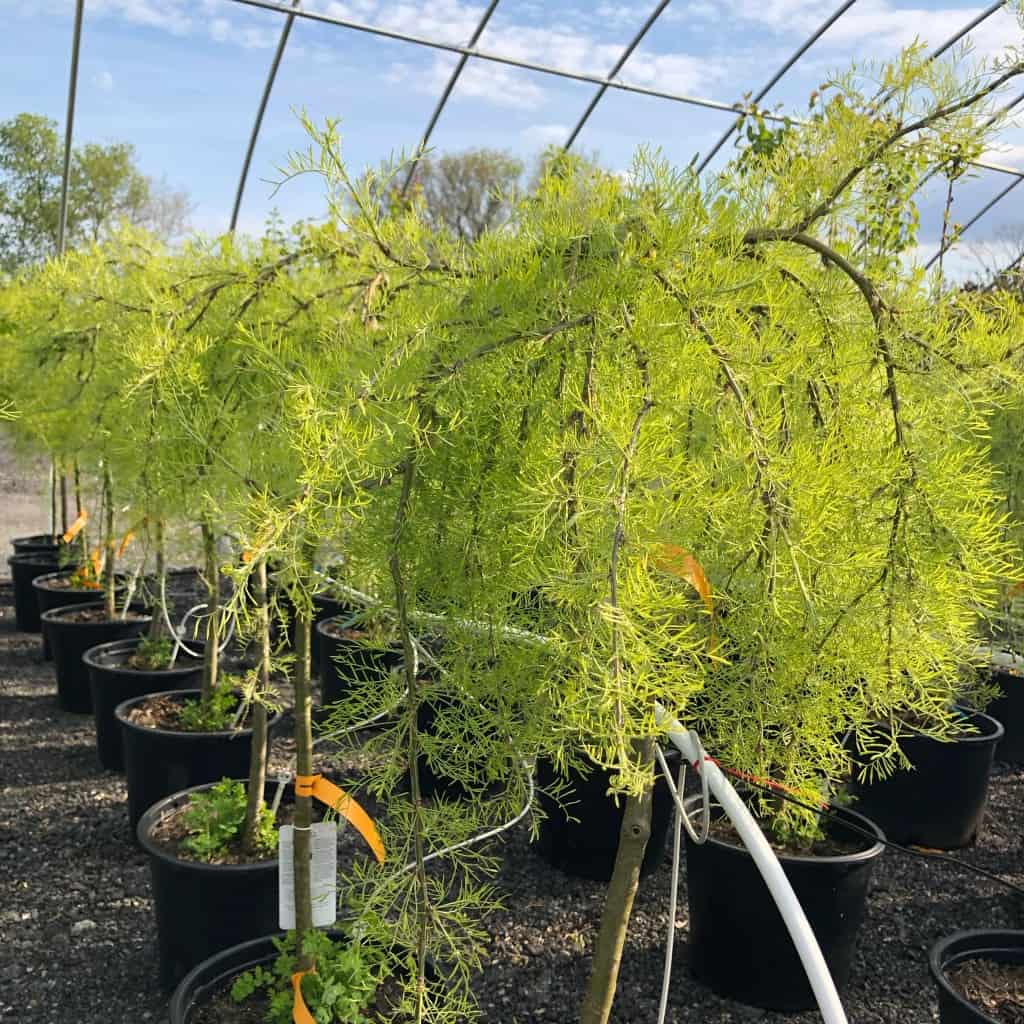
The Weeping Siberian Peashrub, also called Caragana Arborescens ‘Pendula’, is popular among gardening fans. It’s known for its beauty, just like Japanese Sedge ‘Variegata’ and Morrow’s Sedge ‘Variegata’. This ornamental grass plant is well-loved worldwide.
This ornamental grass is famous for being low maintenance and growing at a moderate rate. Its dark green leaves can brighten up your house or garden. But, only if you learn how to take proper care of it for it to thrive.
Fortunately, this is exactly what we’ll cover in this Weeping Siberian Peashrub Care Guide. So let’s dive in.
Unique Aesthetic Appeal of Weeping Siberian Peashrub
The Weeping Siberian Peashrub (Caragana arborescens ‘Pendula’) is admired for its graceful, cascading branches that form a natural umbrella shape. Its delicate green foliage adds a soft, elegant look to any garden space. In spring, small yellow flowers appear, adding a splash of color and attracting pollinators.
This unique shrub keeps visual interest throughout the year. In summer, the airy leaves create light shade, while in winter, its bare, arching branches add structure to the landscape.
Ideal Uses in Landscaping:
- Create a dramatic garden focal point
- Accent a walkway or entrance
- Add softness to mixed shrub borders
| Feature | Benefit |
| Cascading branches | Elegant, flowing shape |
| Seasonal interest | Flowers, foliage, structure |
| Low maintenance | Easy to care for |
When placed thoughtfully, this shrub brings charm and graceful movement to any outdoor design.
In order to take proper care of your Weeping Siberian Peashrub you’ll need to keep in mind the following guidelines:
- Water: The Weeping Siberian Peashrub grows best with watering each week. Increase the frequency of watering when it gets hot.
- Light: Keep your Caragana Arborescens ‘Pendula’ in an environment where it can receive full sun on a daily basis.
- Soil: Keep the Weeping Siberian Peashrub in soil that is moist but well-draining. It should ideally have clay, loam, chalk, and sand.
And that’s practically it! If you keep these three factors in check, your Weeping Siberian Peashrub will likely have all it needs for it to survive and even thrive.
Scientific / Botanical Aspects of Weeping Siberian Peashrub
The Weeping Siberian Peashrub is part of the Cyperaceae family. It belongs to the genus Carex and the species Morrowii. Its scientific name is Caragana Arborescens ‘Pendula’ (kar-uh-GAN-uh ar-bo-RES-senz).
As with other Carex’s, the Weeping Siberian Peashrub is a deciduous plant, which means it will shed its leaves annually once autumn comes.
Growing Region
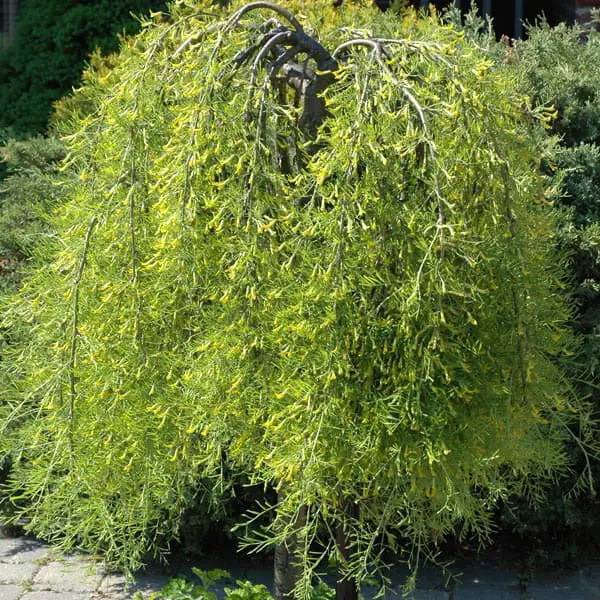
The Weeping Siberian Peashrub is a plant native to Siberia, Manchuria and southern Japan.
Keep in mind your plants’ native region and environment. These are the conditions your Weeping Siberian Peashrub prefers. This is where it can thrive best.
The Caragana Arborescens ‘Pendula’ thrives in heat zones 1 to 12. Its hardiness ranges from levels 5b to 9a. The ideal climate for this plant is in zones 3 to 24.
Growth and Size of Caragana Arborescens ‘Pendula’
Growth
The Weeping Siberian Peashrub grows at a moderate pace. This makes it easier for plant enthusiasts to care for.
Size
But, what size of Weeping Siberian Peashrub are we talking about? What can you expect in terms of height, spread and spacing? Let’s dig in…
The Caragana Arborescens ‘Pendula’ can grow up to 1′ – 2′ (30cm – 60cm) in 1′ – 2′ (30cm – 60cm) and 1′ – 2′ (30cm – 60cm) in 1′ – 2′ (30cm – 60cm).
The Weeping Siberian Peashrub is a medium-sized ornamental grass. Keep this in mind when choosing where to place it at home.
Expect it to grow in a lovely weeping shape. Keep this in mind when planning your garden landscape.
This is why experts recommend keeping an area of approximately 24″ (60cm) free so the Weeping Siberian Peashrub can spread to its best extent.
Watering
Keep your Weeping Siberian Peashrub in moist, well-draining soil. This helps your plant grow and thrive.
When you consider this, this is why you should aim to choose soil that has moist properties to keep the right moisture levels at all times.
From our experience, the well-known ‘thumb’ or ‘finger’ test works best for the Weeping Siberian Peashrub. With this method, you can always give it the right amount of water, no matter where you place it.
Soil Mix
The Weeping Siberian Peashrub likes soil that stays moist. So, mix clay, loam, chalk, and sand for the best results.
In addition to this, expert gardeners recommend having preferably alkaline, acid or neutral soil.
Light and Exposure
In terms of light & exposure, the Weeping Siberian Peashrub requires full sun in order for it to thrive under the right conditions.
Most experts agree that this ornamental grass will do well as long as you keep it in shade or partial sun to full sun, and it will be able to grow properly.
We suggest placing your Caragana Arborescens ‘Pendula’ in one of these light conditions:
- Full or deep shade (no direct sunlight or up to 2 hours daily)
- Little to partial shade (2-6 hours of direct sunlight daily)
- Dappled or moderate shade (under other plants’ canopies)
- Full and direct sun (more than 6 hours of direct sunlight daily)
Season
Being a deciduous plant, the Weeping Siberian Peashrub will shed its leaves annually once autumn comes.
But, you can expect it to have its ‘prime-time’ during the spring (early, mid, late), the summer (early, mid, late), the fall, and during the winter.
Flowers
You can expect your Weeping Siberian Peashrub to flower around the spring months from April to June (spring).
In particular, this ornamental grass is well known for its showy flowers around the plant enthusiast community.
The Weeping Siberian Peashrub produces some beautiful yellow or brown/copper flowers around this time of year.
Foliage
The leaves from the Weeping Siberian Peashrub have a beautiful dark green color during most of the year.
You can expect the leaves from your Caragana Arborescens ‘Pendula’ to be around (> 6 inches) in size.
Attracts, Tolerance and Resistance
The Weeping Siberian Peashrub can handle wet soil and deer. So, you don’t need to worry. Your Caragana Arborescens ‘Pendula’ will be just fine.
Companion Plants
With a summery, light green color and delicate leaves that resemble lace, the Weeping Siberian Peashrub is striking by itself. But when paired with other plants such as Lilacs or Mexican Sage, it really shines. Also, try pairing it up with Shasta Daisies to bring out its best qualities all season long, you will love what happens in your garden.
Garden
Now, let’s talk garden and how your Weeping Siberian Peashrub will look best in it.
Most Caragana Arborescens ‘Pendula’ owners agree that this ornamental grass will look great in most contemporary gardens of all types.
Other owners consider that they complement well most gardens of informal and cottage, city and courtyard, gravel and rock garden, and modern garden styles.
In particular, the Weeping Siberian Peashrub’s best location within your garden is in ground covers, beds and borders, and patios and containers; others use it for landscaping in a coastal exposure, hedge, border, erosion control, or a privacy screen.
Weeping Siberian Peashrub (Caragana Arborescens’ Related Questions
How big does a Siberian Peashrub get?
A Siberian Peashrub grows as large shrubs or small trees up to 18 ft tall with rigid stems from its thick root stratum. This lets it gather minerals like calcium in higher amounts than other plants. It does this because it has low sodium levels. Its roots often go deep into limestone soils. Its foliage is dense along branches since each stem only supports one tufted branch, unlike most bushes/shrubs, so new shoots develop laterally.
Is Siberian Peashrub invasive?
The Siberian Peashrub is a plant that fixes nitrogen and competes with other shrub species. It can grow on woodland edges, savannas, or in open fields.
Are Siberian pea shrubs edible?
The seeds, seedpod, and oil are from this plant all edible. Prepare the seeds for cooking by removing their tough coatings. Do this at least a day in advance. This helps reduce any bitter flavor. You can use these super nutritious seeds as an ingredient or garnish them when preparing almost anything like spicy curries.
Are Siberian peas good for chickens to eat?
Siberian pea seeds are a favorite food of chickens. They’re easy to harvest and can be fed to the birds in winter or let them eat it themselves when they ripen naturally in autumn.
Conclusion
The Weeping Siberian Peashrub is a flowering shrub from Siberia. It is great for gardeners in colder climates. Now that you know what is required to maintain this beautiful plant in your garden go out and get one. If your friends like gardening or plants, share this article. They can enjoy growing their own Weeping Siberian Peashrub too!

